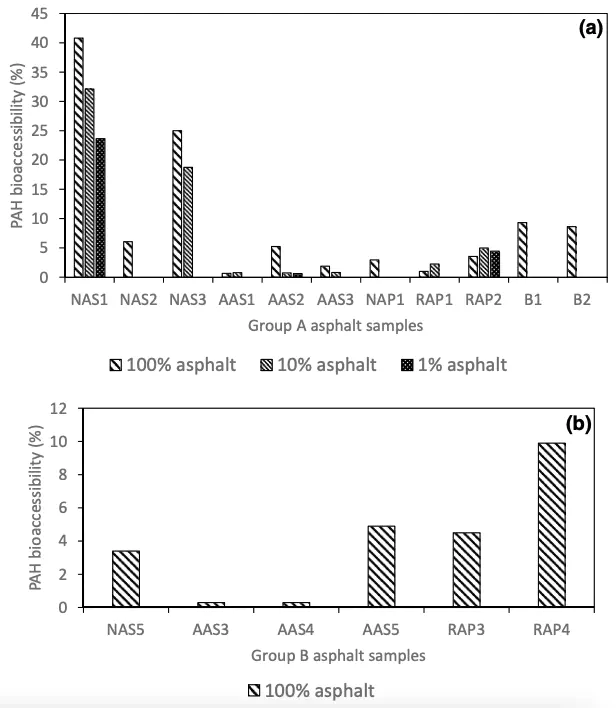Contribution of asphalt products to total and bioaccessible polycyclic aromatic hydrocarbons

Abstract
Soil-like waste products such as construction and demolition debris fines, street sweepings and catch basin sediments often contain elevated concentrations of polycyclic aromatic hydrocarbons (PAHs) resulting from anthropogenic activities. Previous research suggested that small pieces of asphalt may contribute to PAHs in these wastes. The objective of this research was to investigate this idea by analyzing total PAHs concentrations in various asphalt products to assess their contribution to PAHs in these wastes. Five types of asphalt products (new and used asphalt shingles, new asphalt pavement, reclaimed asphalt pavement [RAP], and bitumen) were selected. PAHs concentrations were relatively low in most of the asphalt products except for RAP. The benzo[a]pyrene-equivalent (BaP-equivalent) concentrations in two RAP samples exceeded both Florida and EPA risk thresholds. PAHs bioaccessibility tests were conducted using a mild solvent extraction method on asphalt product samples of several different samples sizes (< 0.5 cm and < 250 µm); bioaccessibility was measured at < 10% for most samples. When asphalt products were mixed with clean sand to mimic soil-like waste, PAHs concentrations and bioaccessibility for most products decreased with decreasing asphalt percentages. Though PAHs sources for asphalt products are petrogenic, the few detected diagnostic ratios did not indicate a clear petrogenic source for these materials, suggesting that caution be taken when using diagnostic ratios for source apportionment related to these materials.